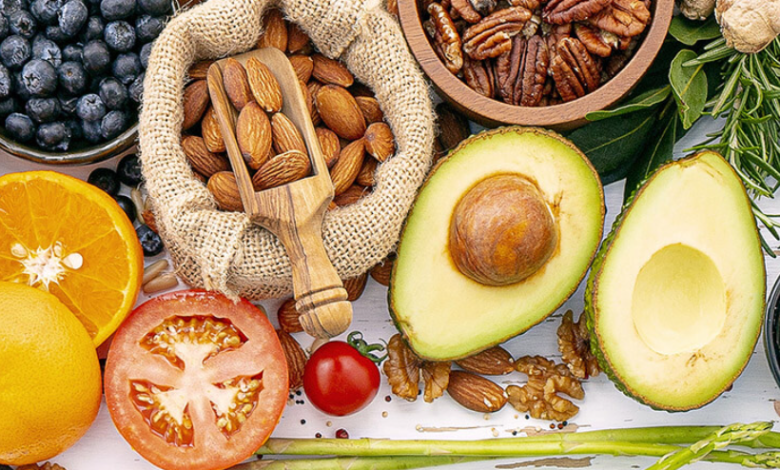The Impact of Fruit Consumption on Cholesterol Levels

A high cholesterol diagnosis can be quite disconcerting for people, and many immediately set about ways to improve their diet. While cutting out saturated fats is often recommended, it is also quite important to consider what foods should be fortified in the diet.
Fruits indeed act as perfect allies in lipid management. They are rich in soluble fiber, which binds to cholesterol in the digestive tract, and they also give antioxidant properties that can help prevent the formation of plaques.
We analyze the impact of fruit consumption on cholesterol levels, employing a research-based approach to its dietary treatment. Without wasting any time, let’s begin.
Do Fruits Impact Heart Health?
Fruits are found at the center of diet regimes. This statement seems simple, but several factors provide a standing. Having said that, there’s a firm scientific association between fruit consumption and sound cardiovascular health.
Through some key mechanisms, fruits do tend to improve cardiovascular health. Let’s discuss these factors pertaining directly to the risk of heart diseases:
Cholesterol Management
Soluble fiber in many fruits (such as pectins in apples and citrus) binds to cholesterol present in the digestive tract. So it does not get absorbed into the bloodstream, thereby lowering the levels of LDL (“bad”) cholesterol.
Blood Pressure Regulation
Potassium-rich fruits such as bananas, oranges, melons, and others help maintain balanced sodium levels. They also function to relax blood vessels to maintain healthy blood pressure.
Antioxidant Protection
Some fruits possess very high quantities of vitamin C as well as polyphenols. They are good antioxidant sources that lower oxidative stress and inflammation, which are major factors in atherosclerosis (hardening of arteries).
Nitric Oxide Production
Certain fruits, including beets and watermelon, contain substances that increase nitric oxide production in the body. This molecule acts as a vasodilator to improve the blood pressure.
Note: We’re referring to whole, fresh, or frozen fruit; not to heavily processed or sugar-sweetened fruit juices or products.
In summary, fruit isn’t a cure-all, but making it a regular part of your diet is backed by science. Fruits support better heart health, especially when it comes to cholesterol.
Impact of Fruit Consumption on Cholesterol Levels
When it comes to high cholesterol and other cardiovascular issues, the first suggestion is often what NOT to eat. But on the brighter side, there are foods you must add to the menu, such as fruits!
Fruits such as apples, oranges, berries, and grapes are a hearty secret weapon. These contain two life-saving techs: soluble fiber and polyphenols, the healthy plant compounds.
And look at what they do together in tandem:
Soluble Fiber is Like a Sponge in Your Digestive System
It absorbs cholesterol and helps your system get rid of it. Then your liver, to replenish the cholesterol lost, extracts more “bad” (LDL) cholesterol from your bloodstream. That reduces your cholesterol levels.
The Polyphenols Act as Protective Antioxidants
They prevent the “bad” cholesterol from being chemically changed (oxidized), which is the reason for artery clogging.
Hence, by consuming these fruits, you provide your body with a natural one-two action for cholesterol management and heart health.
Top Fruits to Lower the Cholesterol Levels
Several fruits are rich in soluble fiber, antioxidants, and healthy fats. All of them contribute to reducing LDL (“bad”) cholesterol and improving heart health. But some of them offer unique nutrient compositions for a better lipid profile. Let’s take a look at the best fruits for heart health available.
Apples
Apple continues to be an emblematic fruit for health. It has a reputation for being the foremost source of pectin, a soluble fiber. In the intestines, pectin forms a jelly-like substance that holds onto cholesterol. This barrier prevents cholesterol from being absorbed in the bloodstream and pushed out of the body.
Doctors and nutritionists suggest that even two medium-sized apples a day can lower cholesterol largely.
Health Benefits of Apples
- Has soluble fiber called Pectin, which directly lowers LDL cholesterol.
- Polyphenols (e.g., flavonoids) act as antioxidants that prevent LDL oxidation.
- They also work anti-inflammatory by keeping the blood vessel walls healthy.
- They create an environment for a healthy gut microflora that supports cholesterol metabolism.
- Give a steady release of energy, suitable for weight management, being low in their glycemic index.
Citrus Fruits
Commonly, citrus fruits are said to be high in pectin, like apples. They contain a unique flavonoid-type antioxidant, Hesperidin, to maintain healthy blood circulation while also possibly supporting blood pressure reduction alongside cholesterol.
Scientists have concluded that soluble fiber from citrus fruits can affect a significant decrease in blood cholesterol levels of any person who suffers from hypercholesterolemia.
Health Benefits of Citrus Fruits
- The pectin fiber in the pulp and membrane prevents LDL cholesterol from being absorbed.
- An excellent source of vitamin C, the main antioxidant that repairs blood vessels.
- Flavonoids such as hesperidin improve and reduce the blood pressure of blood vessels.
- May reduce triglyceride levels along with LDL cholesterol.
- Low in calories and high in water content, this supports weight loss that is heart healthy.
Berries (Strawberries, Blueberries, Raspberries)
Berries are packed with soluble fiber and are among the richest sources of anthocyanins. These are potent antioxidant molecules imparting color to these fruits. Anthocyanins thus reduce inflammation as well as the oxidation of LDL cholesterol, a very crucial step towards the formation of arterial plaque.
Berries are filled with soluble fiber and have the richest Anthocyanin content in nature. These are powerful antioxidant molecules that give these fruits their color. Thus, Anthocyanin reduces inflammation and oxidation of LDL cholesterol, which is a major step leading to the creation of arterial plaque.
For anyone with metabolic syndrome, consuming the berries every day improves arterial function and increases HDL (or “good” cholesterol).
Health Benefits of Berries
- Rich in antioxidants, including anthocyanins, that prevent the oxidation of LDL.
- Contain soluble and insoluble fibers that lower cholesterol and promote digestive health.
- Contain constituents that reduce inflammation, particularly chronic inflammation associated with cardiovascular diseases.
- Improve arterial stiffness and function to promote blood flow.
- Low in calorific value and sugar, thus suitable for heart-supportive diets.
Avocados
Avocado is considered an unusual fruit, in that it’s loaded with good monounsaturated fats and fiber. Nutritionists suggest having avocado instead of foods with saturated fats (like butter or cheese). It translates into a direct reduction in low-density-lipoprotein cholesterol intake.
In recent times, a meta analysis showed that avocado intake correlated with a lower LDL cholesterol and total cholesterol. That is, with no effect on HDL cholesterol.
Health Benefits of Avocados
- High in monounsaturated fats (Oleic acid) that lower LDL and raise HDL (“good”) cholesterol.
- Contain plant sterols (Beta-Sitosterol) that block dietary cholesterol absorption.
- Are rich in soluble fiber to amplify cholesterol-lowering effects.
- Strong antioxidants (Lutein, Zeaxanthin) attack the oxidative stress on blood vessels.
- Fosters satiety and promotes the absorption of other heart-healthy nutrients.
Grapes
Grapes, especially red and purple varieties, are rich in resveratrol and other polyphenols.These compounds act as potent antioxidants. They can fight inflammation and might even slow down cholesterol absorption into our bloodstreams.
The polyphenols from grapes do bring a difference in total and LDL cholesterol-lowering. This highlights their function opposed to merely opposing sugar.
Health Benefits of Grapes
- Polyphenols that include resveratrol and flavonoids act as antioxidants preventing LDL particles.
- Fiber and compounds found in the skin maintain healthy cholesterol levels.
- Resveratrol has been found to help in increasing arterial flexibility and lowering blood pressure.
- An anti-inflammatory property-protects the cardiovascular system.
- High potassium content helps regulate blood pressure-a key risk factor for heart disease.
Pears
Pears are an excellent source of soluble fiber, with one medium pear providing nearly six grams of total fiber. A significant portion of that is pectin.
While specific large-scale studies on pears are less common, their high soluble fiber content is well-established. The FDA has approved health claims linking soluble fiber from foods like pears to a reduced risk of coronary heart disease.
Health Benefits of Pears
- An excellent source of cholesterol-lowering soluble fiber, particularly pectin.
- Antioxidants like vitamin C and flavonoids combat oxidative stress.
- The fiber acts as a prebiotic, feeding beneficial gut bacteria linked to cholesterol regulation.
- Promotes a feeling of fullness, aiding in weight control efforts.
- Contains potassium, which helps maintain healthy blood pressure levels.
Bananas
Bananas contribute by providing a good source of soluble fiber and are particularly high in potassium. While potassium doesn’t directly lower LDL cholesterol, it helps regulate blood pressure. It’s a critical component of overall cardiovascular health and often managed alongside cholesterol.
Health Benefits of Bananas
- A good source of soluble fiber, which helps moderate LDL cholesterol levels.
- High potassium content is crucial for balancing sodium and regulating blood pressure.
- Provides resistant starch (especially in greener bananas), which improves gut health.
- Supports heart muscle function with essential electrolytes like potassium and magnesium.
- A low-calorie, nutrient-dense energy source that supports a healthy weight.
The “Portfolio Diet”, a well-researched eating plan for cholesterol reduction, includes foods rich in soluble fiber—like bananas—as a core component for its proven efficacy.
Speaking of this diet plan, you can find it includes most of the best fruits for heart health. But for leveraging their benefits to the full extent, consume them as whole fruits rather than in juice form. Then you’ll get the full spectrum of fiber and nutrients.
More Ways to Lower the Cholesterol Levels
To lower cholesterol levels, focus on adopting lifestyle and dietary changes. Like, increasing fiber-rich foods, engaging in regular exercise, quitting smoking, and reducing alcohol intake. Doctors may also opt for heparin for lowering certain cholesterols as blood thinners and ayurveda work quite well.
For now, we’ll cover a few other ways.
Prioritize Soluble Fiber Beyond Fruit
While fruits are great, try to increase soluble fiber intake. This binds with cholesterol in the digestive tract and removes it. A few of the major ones are oats, barley, legumes (beans, lentils, chickpeas), psyllium husk, and vegetables like Brussels sprouts and broccoli.
Choose Healthy Fats Strategically
Substitution of harmful fats with good ones will do wonders for your lipid profile.
- Reduce Saturated Fats: Red meat, full-fat dairy, butter, and processed foods should be limited.
- Eliminate Trans Fats: Do not consume anything with partially hydrogenated oils on the ingredient list.
- Increase Monounsaturated Fats: Avocados, olive oil, and nuts (almonds, walnuts).
- Increase Omega-3 Fatty Acids: Fatty fish (salmon, mackerel, sardines), flaxseeds, and walnuts. Omega 3s reduce triglycerides and are good for the heart.
Incorporate Plant Sterols and Stanols
The plant compounds Sterols and Stanols have a cholesterol-like structure, thus blocking its absorption from the gut. Such substances are naturally found in small amounts in the vegetables, fruits, nuts, and seeds.
By contrast, fortified foods like select margarines, orange juices, and yogurts are treated with these plant sterols.
Engage in Regular Physical Activity
Physical activity will reduce cholesterol.
- Aerobic exercises (such as fast walking, cycling, swimming) can elevate the levels of HDL (“good”) cholesterol, which helps pull LDL from the arteries.
- Exercise at moderate to high intensity can lower the levels of LDL and triglycerides.
One should aim to do 150 minutes or more of moderate-intensity aerobic exercise each week.
Maintain a Healthy Weight
Excess weight contributes to higher LDL and lower HDL cholesterol. So even a 5-10% weight loss would be sufficient to reduce cholesterol levels while simultaneously reducing cardiovascular risk.
Limit Dietary Cholesterol and Refined Carbs
While dietary cholesterol’s impact is now considered smaller than saturated fat, it’s still prudent to moderate intake.
You can, of course, moderate foods like egg yolks, organ meats, and full-fat dairy. However, refined carbohydrates and sugars in foods such as bread and pastries can lower HDL cholesterol and raise triglycerides.
Important Disclaimer
Always consult your physician or a registered dietitian about any major changes made concerning your diet or lifestyle. Both practitioners will aid you in obtaining an individual assessment of your complete health profile.
Let’s Summarize the Fruits’ Health Impacts
One of the best scientifically-supported and natural strategies for managing cholesterol levels is fruit consumption. Fruits like apples, berries, avocados, and citrus offer a powerful combination of soluble fiber, antioxidants, and healthy fats.
They work in synergy with some other factors to reduce LDL cholesterol, prevent plaque formation, and promote overall cardiovascular resilience. While not a standalone solution, fruit is a fundamental component of a heart-healthy lifestyle. But don’t forget to follow other food elements and exercise regularly.
And we truly cannot stress this enough; contact a doctor and nutritionist to find the best approach to lower cholesterol levels.




